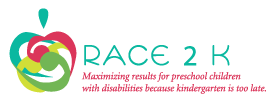Examining Where Services to Children with Disabilities are Provided
The language and terms used to describe district preschool programming can often be confusing. It is not uncommon to hear terms such as “integrated preschool” or “inclusive preschool” to describe a district’s preschool program. When a district says, “We have an integrated preschool”, what does that actually mean? These terms are not used or defined in the IDEA or NH Standards for the Education of Children with Disabilities. It is important that a common understanding of the educational settings and programs being providing our preschool population is developed. The Office of Special Education Programs (OSEP) at the US DOE defines three different types of educational settings/environments for children aged 3-5 which align with the NH Standards for the Education of Children with Disabilities:
Regular Early Childhood Setting
NHSEIS 3-5 Early Childhood ProgramIn the school aged context, the Early Childhood environment/setting would be equivalent to the Regular Education Environment (aka the regular first grade classroom). An early childhood setting is defined as having at least 50% of children without IEPs. In other words, at least half of the “class” will always be children who are not identified for special education. Programs associated with this setting include but are not limited to programs in these categories:
- Head Start
- Preschool classes offered by the public school system
- Private preschools (Community Preschool Programs)
- Family Child Care or other Child Care Center
Special Education Setting
NHSEIS as 3-5 Year Old Special Education Classrooms, 3-5 Separate School, and 3-5 Residential FacilityIn school aged context, this would be similar to self -contained programs or specially designed classrooms. A special education classroom is defined as having less than 50% of the children without IEPs. In other words, the majority of the children in the classroom are children with disabilities. It is operated by the local school district and can include, but is not limited to special education classrooms in regular school buildings, trailers or portables outside the regular school building.
-
- Separate schools- A separate school is defined as a publicly or privately operated separate day school facility designed specifically for children with disabilities.
- Residential programs- A residential facility is a publicly or privately operated residential school or residential medical facility on an inpatient basis.
Other
NHSEIS 3-5 Year Old Homebased/Child’s Home or 3-5 Year Old Service Provider LocationHome – A preschooler with special needs may receive some or all special education and related services in the child’s home. Home is defined as the principal residence of the child’s family or caregivers. The term caregivers includes babysitters.
Service Provider Location – Service provider location is defined as receiving special education and/or related services such as speech therapy in a:
- Therapist or clinician’s office in a public school
- Private therapist or clinician’s office
- Hospitals facilities in an outpatient basis
Unlike with school-aged children, Service Provider Location is an appropriate setting in NHSEIS for preschool aged children. A child may require speech therapy, but not a preschool program. In this case, services may be provided by a speech pathologist individually or in a small group at a site such as a speech room in a local elementary school, or in a district preschool classroom after hours.


